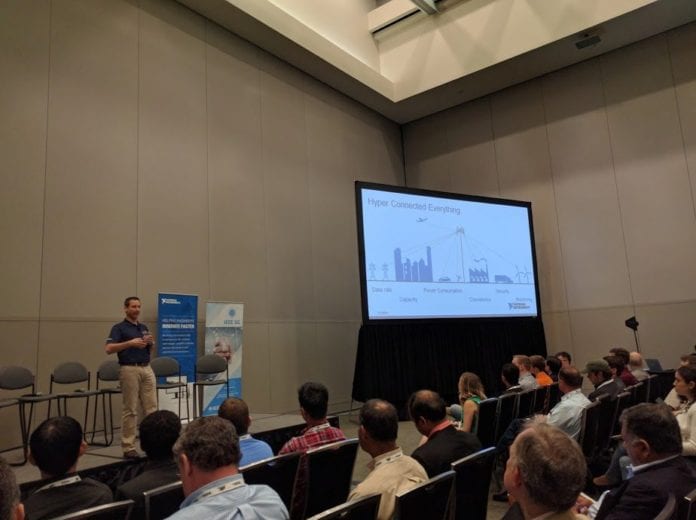NIWeek panel, making 5G a reality
AUSTIN, Texas – At NI Week 2016, Mike Santori, VP of product marketing at National Instruments, spoke of the steps needed to bring future mobile network standards into reality during a panel discussion titled “Making 5G A Reality.”
Santori said, in a “5G” ecosystem, everything is hyperconnected, emphasizing that the success of 5G and the “internet of things” goes hand-in-hand.
“Technologies today are not able to connect all the things we think of as being connected, which might be lots of small sensors that need to talk to each other on two networks,” Santori said. “The success of 5G and IoT are connected. We have to target all aspects of making connected cars and machines and all the technology that goes with it.”
He listed three capabilities that are required components of 5G:
- Massive platform expansion;
- massive machine-type communication; and
- ultra-reliable machine-type communication.
“In terms of the technology being developed, the impact of what is being worked on, how it will affect industry and society – it is amazing the touch points to something that to a lot of people is an obscure topic,” Santori said. “5G doesn’t just stand alone, it is a fundamentally enabling technology to a connected world.”
National Instruments is helping bring together everything that will comprise 5G by giving developers the tools to create prototypes, an essential process of testing and measurement.
“Prototyping is critical for algorithm research,” Santori said. “There are too many use cases to be used in just a theoretical sense, you need to be able to try things out. Software is difficult because of artificial complexity – it’s not the difficulty in the problem, it’s the implementation to try out the problem, the sheer pain in the process of uploading software on the architecture to try them out. Getting algorithms partitioned between one or more processors, the tools involved, the thought process is a daunting challenge to trying things out in the real world. NI views our role as knocking down those barriers and letting us help you work on the underlying necessary path to get the hardware running.”

NI uses its LabVIEW RIO to provide computing power and input/output, allowing its partners to integrate hardware, develop algorithms and reach system completion. The keys to the success of National Instrument’ platform, according to Santori are:
- Leveraging Moore’s law;
- growing the ecosystem
- user community, NI support, NI channel, partners, third-party hardware and software, NI services;
- leveraging, sharing tech from NI to others.
“It is really important that our platform is truly open, bringing in IP and sharing from other sources,” Santori said. “We really focused on integrating all the other approaches that could bring in algorithms, IP work with colleagues, and make sure they work together. LTE, 802.11, MIMO, millimeter wave, you can start at the bits if you want, low-level implementations or start at app frameworks.”
The results of providing developers a platform to develop, create prototypes and test, has seen success over the years. Nokia created a timeline with NI to increase peak data rates. The numbers speak for themselves:
- Brooklyn 5G (2014)
- 3 gigabits per second
- NI Week (2015)
- >10 Gbps
- MWC (2016)
- >14.5 Gbps
“It took about one calendar year, less than half the time it would have taken with other tools,” said Amitava Ghosh, Nokia Fellow and head of small cell research.

